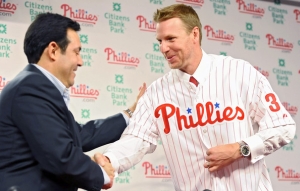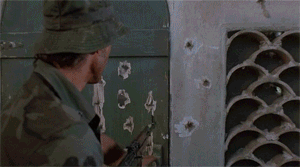Auction Fantasy Drafts Are The Only Way To Live
 My Sunday night this week was spent hunched over my laptop drafting a fantasy baseball team for three and a half hours; I wouldn’t have spent it any other way. I don’t know why I never tried it earlier. I also don’t know how I can ever go back to a regular draft after experiencing the strategy, exposed homerism, and hilarity of an auction draft.
My Sunday night this week was spent hunched over my laptop drafting a fantasy baseball team for three and a half hours; I wouldn’t have spent it any other way. I don’t know why I never tried it earlier. I also don’t know how I can ever go back to a regular draft after experiencing the strategy, exposed homerism, and hilarity of an auction draft.
I got invited into a league at the eleventh hour, and once I heard that there were seven Yankee fans among the twelve managers, I knew I had to fuck with them. Having the first nomination of the draft fall into my lap provided the perfect opportunity to kick off the festivities perfectly. But before I go into a short narrative of the draft, I guess I’ll do some explaining.
For the uninitiated, a normal fantasy draft takes the 12 (or 14 or whatever) managers and plops them in a random order, and flips the drafting order each round, e.g., whoever picks second in the 1st round picks second to LAST in the 2nd round. This goes for however many rounds as there are player slots designated for each team. But I’m sure anyone bothering to read this post already knew this.
Now, the auction draft — like all other fantasy drafts I’ve taken part in — was on Yahoo!, so I don’t know if the exact rules apply, but I’m sure that even within Yahoo! (yes, I’m totally gonna keep adding the exclamation point) there are plenty of options to fiddle around with, so not every fantasy draft is the same anyhow. But for my draft, each team was provided with $260 monopoly dollars to fill 21 slots (C,1B,2B,SS,3B,OF,OF,OF,Util,SP,SP,RP,RP,P,P,P,BN,BN,BN,BN,BN). Feel free to ask if you’re clueless and actually interested in knowing what those stand for. From there, the managers are put in a random order just like a normal draft, but in this case, each manager nominates a player instead of drafting him. This means that the manager effectively bids $1 for this player and from then on anyone can bid up to whatever they want, short of bankrupting themselves from filling all their slots — meaning $1 is left for each empty slot no matter what, limiting the maximum bid by a few dollars. For every player nominated, the projected and average draft values are displayed, so there is at least some sort of benchmark to which even the most clueless manager can refer.
Yet when I nominated Phil Hughes — whose average draft value couldn’t have been more than two — the Yankee fans fell over themselves and hilariously bid him up to $7. By comparison, Roy Oswalt and Lance Berkman also went for $7 later in the draft. Sadly, I think that obscene bidding war might have been the high point of the draft. But the sprawling length of the draft did provide for many other moments, like when the lone Braves fan bid $20 for Mariano Rivera, assuming at least one of the Yankee fans would bite. They didn’t. I guess they had learned their lesson with Hughes. Or when the same Braves fan kept bidding up the price for Santana just to annoy me –even after joking for weeks about how his elbow is going to explode — and I finally conceded, much to his dismay. Or when one of the Yankee fans tried to bait me in particular by nominating John Maine. He ended up spending his first dollar and roster spot on John Maine. Awesome.
The high point of my draft personally had to be snatching Roy Halladay for $35. Not a huge bargain, but considering Tim Lincecum went for $47, and C.C. Sabathia and Zack Greinke for $39, I think I made out alright. He will totally decimate the NL, especially when you consider that he won’t be facing the best offense in the league. Oh, and somehow Chris Carpenter went for $37 AFTER I picked up Halladay, but that was someone who missed the draft having the computer draft for them. And that’s why you always make auction drafts.
So if you’re ever a manager of a fantasy league, make sure everyone can make the draft, and then set up an auction draft. It’s the American way.
Related posts:














